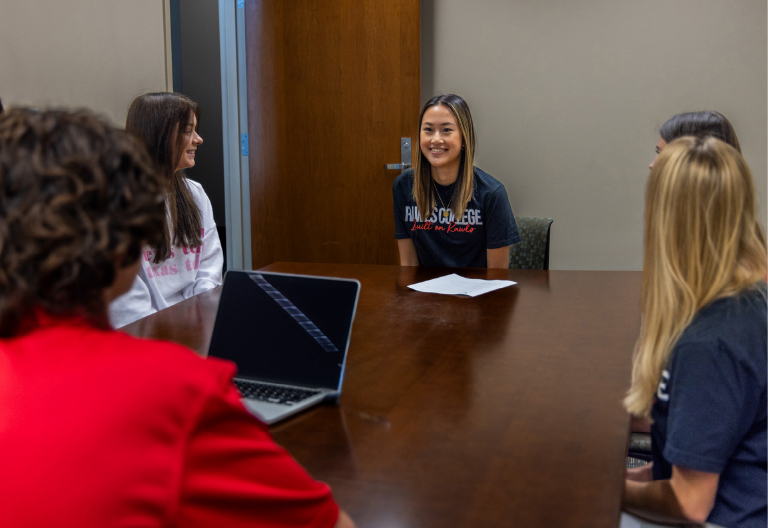
Georgie G. Snyder Center for Business Communication
Achieving Excellence in Business through Excellence in Communication

The Georgie G. Snyder Center for Business Communication (CBC) is dedicated to helping the Rawls College of Business community develop communication skills that lead to academic, professional, and personal success. Through consultations, workshops, microcredentials , and other services, we support Rawls students and faculty in “achieving excellence in business through excellence in communication.”
Services
Consultations
Whether you're brainstorming or making final edits, we can help you enhance your presentation, writing assignment, or other communication-related project at any stage of development. Consultations are available for individuals or teams, face-to-face or online. Create an account and schedule an appointment at a time that's convenient for you!
Example Consultation Topics
- Applications for scholarships and graduate programs
- Brainstorming
- Case study analyses
- Cover letters
- Emails to professors, employers, or coworkers
- Content, delivery, and slide design for presentations
- Reports and business memos
- Social media posts / blog posts
- Team building
- Any project related to writing, presenting, or team communication
Workshops
Workshops are offered throughout the year on a variety of topics related to verbal, written, interpersonal, and team communication. Some are hosted exclusively by the CBC, while others are offered in partnership with specific academic areas, student organizations, and other Rawls student services.
Microcredentials
Beginning in spring 2024, Rawls students will have the opportunity to work with the CBC to earn three exclusive microcredentials in business communication. These microcredentials are shareable on social media and signify your dedication to excellence in communication to those both inside and outside of the Rawls College community.
Recipients of the Team Communication Microcredential demonstrate excellence in using interpersonal communication to strengthen teamwork and productivity. They have developed an understanding of the conventions and expectations of professional business communication and have learned how to use emotional intelligence to enhance collaboration.
Requirements:
- Participate in two CBC-affiliated workshops
- Participate in two CBC team consultations (Team Project or Team Building)
- Complete one of the following:
- Earn a 90+ on a group project in a Rawls College course
- Hold a leadership position in a club, organization, or job for at least three months
- Receive a recommendation from a Rawls College faculty member who endorses your ability to work well within a team setting
Recipients of the Verbal Communication Microcredential demonstrate excellence in presenting and speaking in business settings. They have developed an understanding of the conventions and expectations of professional business communication and have learned how to use emotional intelligence to strengthen business relationships.
Requirements:
- Participate in two CBC-affiliated workshops
- Participate in two CBC workshops
- Complete one of the following:
- Earn a 90+ on a group project in a Rawls College course
- Give a presentation or speech for a club, organization, or university-related event
- Receive a recommendation from a Rawls College faculty member who endorses your verbal communication skills
Recipients of the Written Communication Microcredential have demonstrated excellence in writing for business settings. They have developed an understanding of the conventions and expectations of professional business communication and have learned how to use emotional intelligence in their writing to strengthen business relationships.
Requirements:
- Participate in one CBC-affiliated workshop
- Participate in three CBC consultations focused on the creation or revision of written documents
- Complete one of the following:
- Earn a 90+ on a group project in a Rawls College course
- Receive a recommendation from a Rawls College faculty member who endorses your writing ability.
Recipients of the CBC's Excellence in Business Communication Microcredential have demonstrated a personal and professional commitment to excellence by successfully completing the Team Communication, Verbal Communication, and Written Communication Microcredential.
Requirements:
- Complete all requirements of the Team Communication Microcredential
- Complete all requirements of the Verbal Communication Microcredential
- Complete all requirements of the Written Communication Microcredential
- Rawls_SnyderCBC@ttu.edu
- 806.742.1944
- BA 139
- 9:30 am - 4:30 pm
Rawls College of Business
-
Address
Rawls College of Business, Box 42101, 703 Flint Avenue, Lubbock, TX 79409 -
Phone
806.742.3188 -
Email
ba_webmaster@ttu.edu
